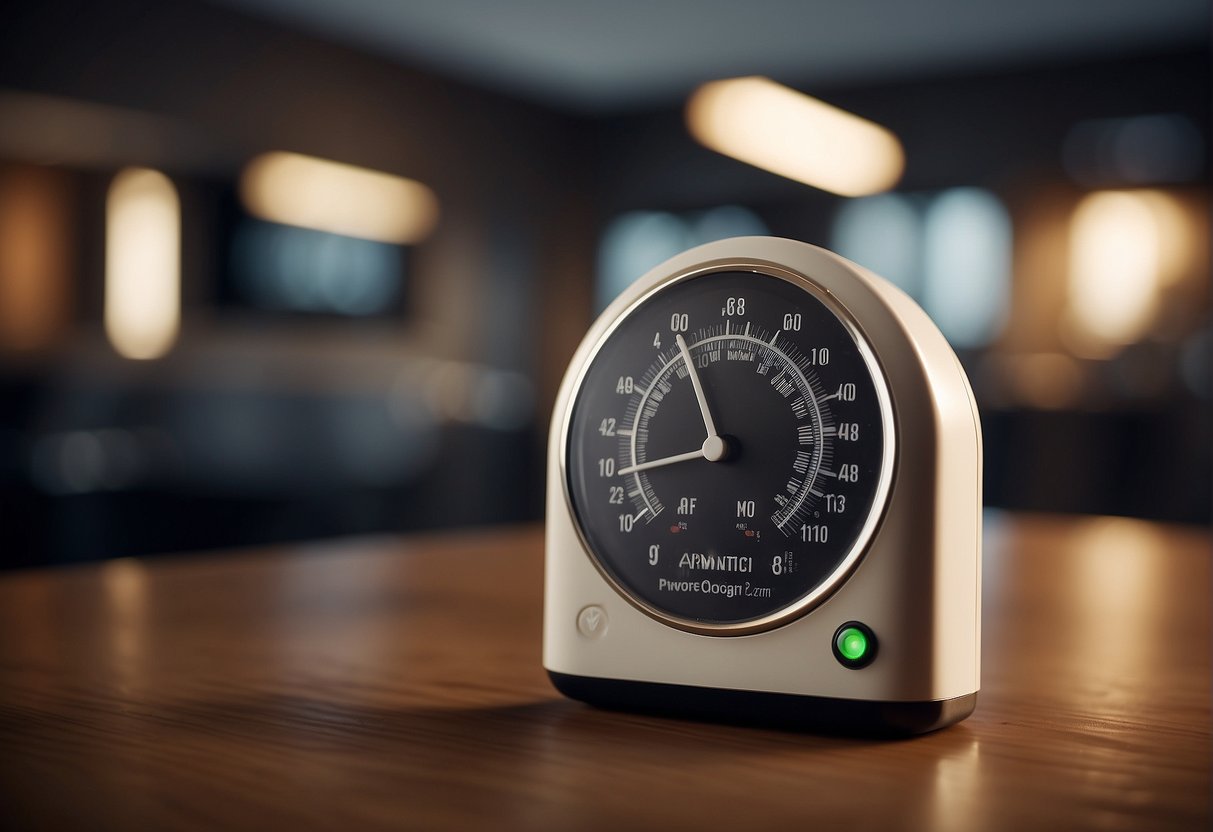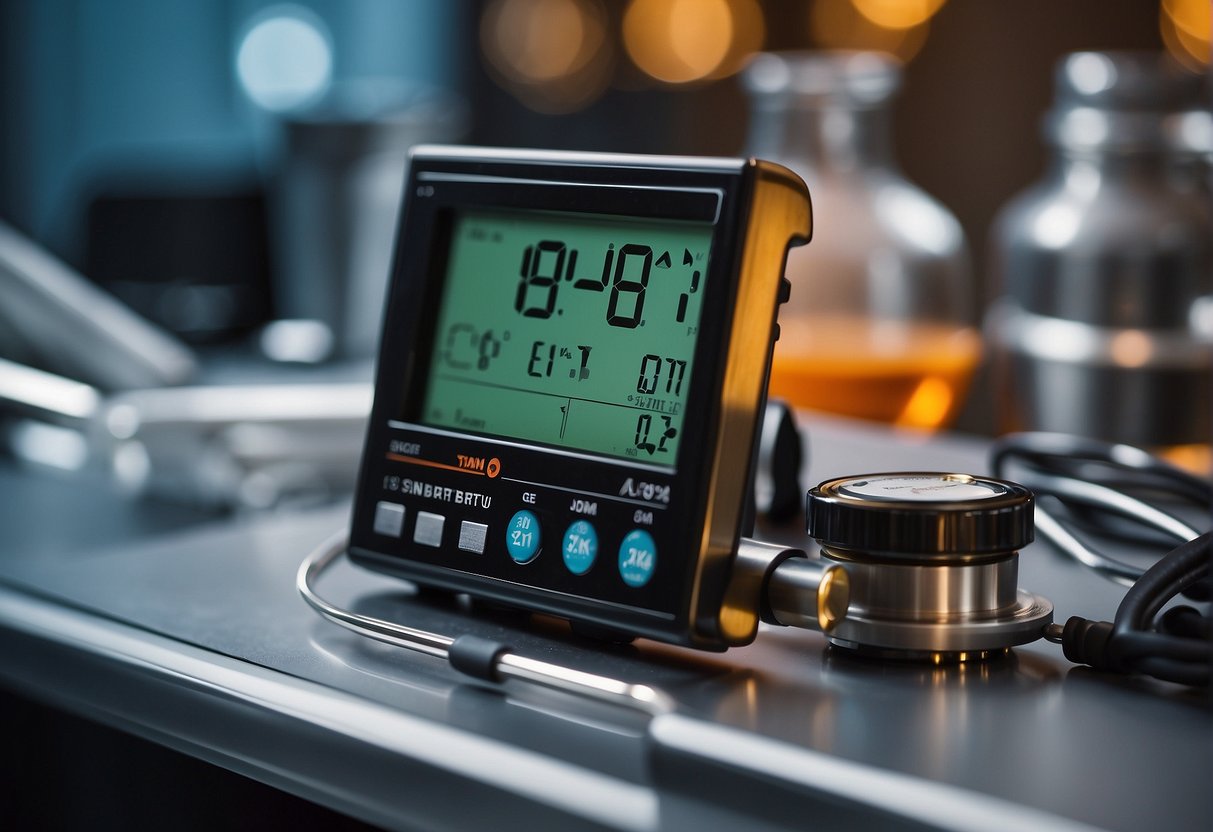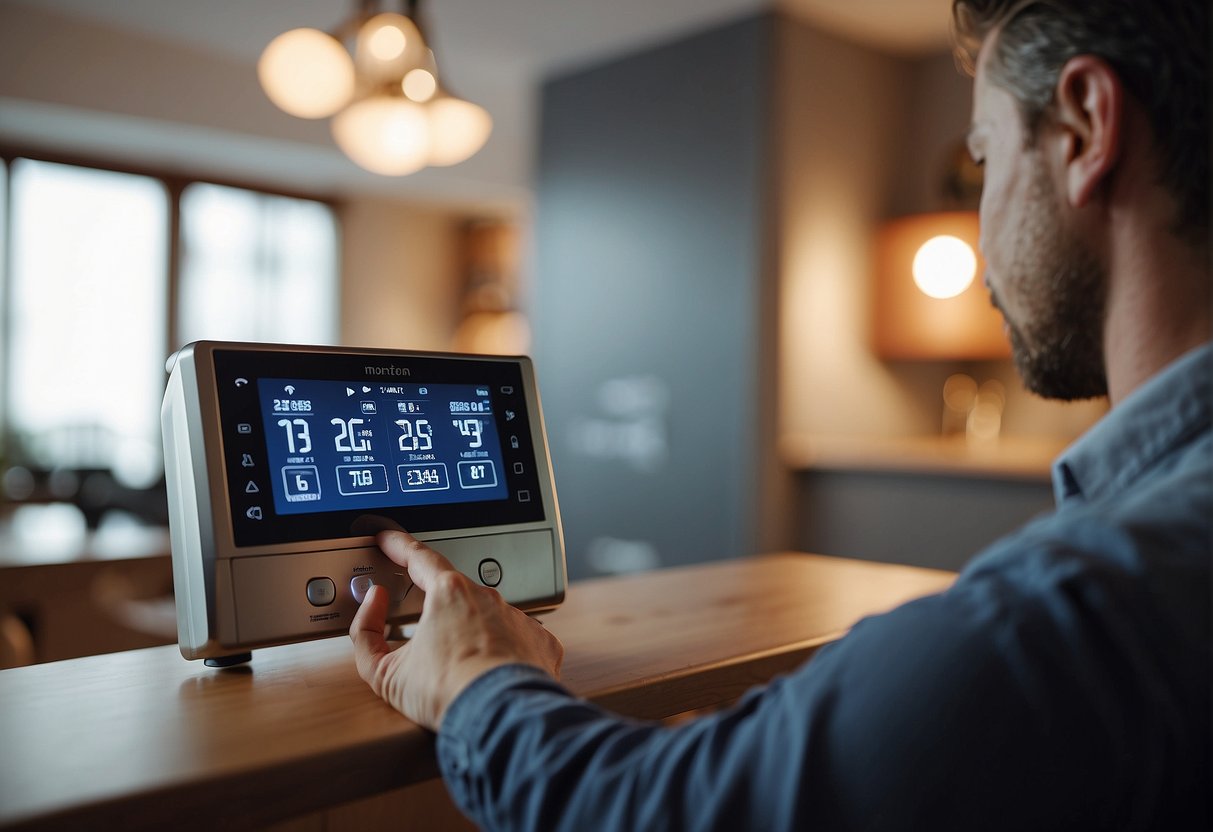
Efficient Temperature Regulation: Easy Ways to Keep Your Space Comfy
Efficient temperature regulation has become an essential aspect of modern living and working environments, as it helps maintain optimal conditions for comfort, productivity, and safety. From personal thermal management solutions to industrial applications, various strategies and technologies have been developed to ensure that temperature control is both effective and resource-efficient.
There are fundamental principles governing temperature regulation, which serve as the basis for the development of temperature control technologies. Research has also explored materials with specialized thermal properties and how they can be incorporated into the design of temperature-regulating systems. Advancements in fields like additive manufacturing and measurement techniques have further contributed to improving the efficiency and reliability of these systems.
Challenges still persist in achieving efficient temperature regulation, as they require continuous advancements in technology and assessing their effectiveness in real-world applications. However, understanding the diverse range of approaches and learning from their successes and limitations pave the way for promising future developments in this field.
Key Takeaways from Efficient Temperature Regulation
- Efficient temperature regulation plays a critical role in maintaining comfort and safety in various environments.
- A variety of principles, materials, and technologies have been developed to improve the efficiency of temperature control systems.
- Ongoing research and development efforts aim to address challenges and drive advancements in efficient temperature regulation solutions.
Principles of Temperature Regulation

Mechanisms of Heat Transfer
When it comes to temperature regulation, it’s essential to understand the physics behind heat transfer. Generally, heat moves from hot to cold objects, and there are three main mechanisms: conduction, convection, and radiation.
Conduction: This is the most common heat transfer mechanism, and it happens with direct contact between two objects. Thermal conductivity is a critical property here, as it determines how quickly heat can move through a material. Think of it like passing a hot potato between friends: the faster you toss it, the less time you have to get burned.
Convection: This one comes into play with fluids, like air or water. As heat is transferred into the fluid, it moves faster, becoming less dense and rising. Cooler fluid then sinks to replace it, and the dance goes on. This is how many heating systems work, like the trusty radiator in your living room.
Radiation: Even without contact, objects can exchange heat through thermal radiation. Everything emits a bit of this energy invisibly, and the hotter it is, the more it sends off. Imagine a sizzling pan on the stove – even without touching it, you can feel the heat radiating from it.
Materials and Thermal Properties
Okay, let’s talk materials. Each one has its own unique thermal properties, like thermal conductivity and capacity. These factors influence how suitable a material is for temperature regulation.
Thermal conductivity: it’s all about how quickly a material can move heat. Metals, for example, are fantastic conductors (just touch a metal spoon that’s been in hot soup). On the other end of the spectrum, materials like Styrofoam are great insulators, making them excellent for coolers!
Thermal capacity: this one’s more about how much heat a material can hold. For instance, think of a water bottle on a hot day: even when it’s sitting in the sun, its contents remain cool because of water’s high thermal capacity. It absorbs heat without changing much in temperature.
Now here’s where things get really cool (pun intended): phase change materials (PCMs). They store and release heat during phase transitions (like melting or solidifying) rather than conventional heating. PCMs include things like paraffin wax and salt hydrates, and they’re pretty fantastic at temperature regulation. They can absorb huge amounts of heat without affecting the surrounding temperature and making everyone hot and sweaty.
| Material | Thermal Conductivity | Example Application |
|---|---|---|
| Metal | High | Cooking pots |
| Styrofoam | Low | Insulated containers |
| Phase Change Materials | Varies | Thermal energy storage |
Temperature Control Technologies
Advanced Materials for Temperature Management
In recent years, the development of advanced materials has played a crucial role in temperature management. These materials come with improved thermophysical properties, such as high thermal conductivity and low thermal resistance, to enhance temperature regulation across various applications.
One such example is the geometric conductance factor (GCF), which measures how effective a material is in handling heat flow. Materials with a high GCF allow for better temperature control while maintaining a compact design. This has led to numerous innovations in fields like electronics, aerospace, and automotive industries, where efficient temperature management is crucial.
Another noteworthy advancement is the integration of Industry 4.0 in temperature management systems. This includes using sensors, smart controllers, and digital connectivity for real-time monitoring and control of temperatures. Industry 4.0 enables an optimization paradigm that ensures energy efficiency and cost savings by adjusting temperature levels as needed.
Emerging Trends in Temperature Regulation
As technology continues to evolve, so do the trends in temperature regulation. Here are some of the emerging trends in this field:
Control Method: Active and passive control methods are both evolving to meet the changing needs of various industries. Active systems utilize external energy sources to maintain temperature, while passive systems rely on materials and designs to achieve desired temperature levels. An increasing number of solutions combine both methods for optimized performance.
Smart Thermostats: These Internet of Things (IoT) devices bring temperature regulation to the next level by allowing users to control temperature settings through their smartphones or other connected devices. They can learn user preferences and adjust settings accordingly – improving energy efficiency.
Phase Change Materials (PCMs): PCMs have the ability to store and release a large amount of thermal energy during their phase transition, making them ideal candidates for passive temperature control. These materials are being extensively researched and implemented in applications ranging from building insulation to thermal energy storage.
In conclusion, temperature control technologies have come a long way and, with the integration of advanced materials and innovative designs, will continue to shape the future of temperature regulation across industries. The focus on energy efficiency and cost savings drives these innovations, ensuring a more sustainable future.
Additive Manufacturing and Temperature Regulation
Role of LBAM in Thermal Efficiency
Laser-based Additive Manufacturing (LBAM) plays a significant role in improving thermal efficiency. During the process of LBAM, laser power is used to selectively melt and solidify layers of material. This ensures precise temperature control and uniformity throughout the structure, ultimately allowing for better temperature regulation.
- Melting: The laser power melts the material to form consistent and durable layers.
- Solidification: The melted material solidifies to create a strong bond between layers, thus enhancing its thermal properties.
It’s crucial for LBAM processes to maintain balance in the melting and solidification phases, otherwise structural defects may occur.
Innovations in Powder Bed Technologies
Powder bed technologies have also undergone some noteworthy innovations, particularly in the aspect of temperature regulation. The advanced systems now provide better temperature control, improved part density, and the ability to work with a wider range of materials.
Some noteworthy advancements in powder bed technologies include:
- Optimized pre-heating methods: Ensuring that the powder bed is pre-heated to a consistent temperature before the laser process, reduces thermal stress and promotes uniformity across the part.
- Enhanced layer control: Improving the evenness of powder distribution across the bed and consistency of the applied layer thickness, significantly contributes to better temperature regulation.
Modelling and Control in Additive Manufacturing
Effective temperature regulation in additive manufacturing is further boosted by the development of modeling and control techniques. A surrogate model, which is a simplified representation of the actual process, helps to predict and maintain optimal temperature conditions.
Below are key benefits of using surrogate models in additive manufacturing:
| Advantages | Description |
|---|---|
| Accuracy | A good surrogate model can accurately predict temperature distribution, both within the part and during processing. |
| Efficiency | With the help of a surrogate model, manufacturers can quickly identify issues and make adjustments to improve temperature regulation. |
| Cost-Effectiveness | Employing a surrogate model allows for a reduction in trial-and-error processes, thus saving time and resources. |
Implementing advanced technologies like LBAM, innovations in powder bed technologies, and the use of surrogate models enable better temperature regulation and control in additive manufacturing, improving the quality and efficiency of the end product.
Measuring and Validation Techniques

Surrogate and FEA Models in Temperature Analysis
When it comes to efficient temperature regulation, surrogate models and finite element analysis (FEA) models are essential tools for measuring and validating thermal processes. Surrogate models, such as Gaussian process-based surrogate models, offer a more casual, lightweight approach to analyzing complex systems. They’re particularly useful for temperature regulation because they provide a quicker, more accurate way to predict outcomes compared to traditional methods.
One popular type of surrogate model is the regression meta-model, which takes historical data and uses it to create simplified, computationally efficient models. These models are handy for approximating intricate systems, allowing engineers to test different thermal management strategies and solutions without investing too much time and computational resources.
On the other hand, FEA models provide a more comprehensive, detailed analysis of temperature distribution within a system. Using complex mathematical equations, FEA models can simulate the behavior of materials, heat sources, and cooling mechanisms under various conditions. However, they can be more computationally intensive, which might slow down the process for some applications.
Validation of Thermal Models
In the realm of efficient temperature regulation, model validation is crucial to ensure that the surrogate and FEA models accurately represent real-world behavior. A few commonly used methods of validating thermal models include:
- Comparative analysis: Comparing the model’s predicted results with experimental data to determine accuracy. This method can help determine whether a model is a good fit for the problem at hand.
- Sensitivity analysis: Investigating the impact of changes in input parameters on model predictions. This technique helps engineers identify critical parameters for temperature regulation and optimize system performance.
- Uncertainty quantification: Evaluating the uncertainty in the model’s predictions due to uncertainties in input parameters or model assumptions. This process allows for a more informed decision-making process when designing temperature regulation strategies.
These validation techniques are useful for the ongoing development and refinement of thermal models, ultimately leading to more efficient temperature regulation solutions. By closely examining and comparing surrogate and FEA models’ outputs with real-world data, engineers can identify potential areas of improvement and design systems capable of maintaining optimal thermal conditions in various environments.
Materials with Specialized Thermal Properties

Cellulose Nanofibers and Thermal Efficiency
Cellulose nanofibers are naturally occurring materials with impressive thermal properties. Recent research has shown that these fibers have the potential to improve thermal efficiency in various applications. One fascinating aspect of cellulose nanofibers is their low thermal conductivity. This allows for effective insulation, reducing energy loss in the process.
Another advantage of cellulose nanofibers is their ability to modulate their properties when combined with other materials, such as photocatalytic materials. The resulting composite materials can exhibit both improved thermal management and environmental responsiveness.
Graphene and Its Impact on Thermostatization
When it comes to materials with unique thermal properties, graphene is a standout contender. This single-layer carbon material has an extremely high thermal conductivity, much higher than many other known materials. This unique attribute makes graphene an ideal material for special cooling and heat management purposes.
Some key applications where graphene shows great potential include:
- Electronics, such as efficient heat spreaders for high-performance chips.
- Thermal interface materials for effective heat dissipation.
- Heat exchangers and energy storage devices in the renewable energy sector.
Bio-Inspired Thermal Regulation
Nature often provides some of the best blueprints for innovative solutions to common challenges. In the realm of temperature regulation, the polar bear’s hair is an excellent example of bio-inspired design. The structure of polar bear hair has fascinating thermal properties, reflecting heat similar to an infrared mirror.
Researchers are replicating the nanostructure of polar bear hair to create synthetic materials that help conserve and redirect heat, thus boosting energy efficiency. These bio-inspired materials show promise for use in various applications such as clothing, buildings, and energy management systems.
In summary, materials like cellulose nanofibers, graphene, and bio-inspired thermal regulation contribute to the development of innovative solutions for efficient temperature regulation. By exploring new methods and applications for these specialized materials, the potential for improved energy efficiency and sustainability is vast.
Application in Personal Thermal Management

When it comes to personal thermal management, there has been significant development in various areas. From wearable technologies to smart fabrics and materials, there are now more sustainable ways to achieve optimal temperature control and maintain desired humidity levels within one’s immediate environment.
Wearable Technologies for Temperature Control
With the rise of wearable technology, temperature regulation has become more accessible for individual users. Some wearables are designed to monitor body temperature continuously, providing timely, relevant data for users to adjust their surrounding environment accordingly. This automatic temperature management could potentially lower energy consumption and make indoor spaces more energy-efficient.
Smart Fabrics and Materials
Another area to consider for personal thermal management is the development of smart fabrics and materials. These textiles can actively or passively respond to environmental stimuli, such as temperature and humidity. For instance, thermally insulating textile exhibits unique properties that trap heat in cold environments while allowing excess warmth to escape during hot conditions.
Some smart materials can even absorb moisture to regulate humidity levels, providing additional comfort to the wearer. This combination of temperature control and humidity management makes these innovations invaluable, especially in urban settings where weather fluctuations can be drastic.
Overall, these advancements in personal thermal management ensure a more sustainable approach to temperature control and humidity management. The use of wearable technologies and smart fabrics enable individuals to efficiently maintain their comfort zones while minimizing energy consumption and reducing the impact on the environment.
Challenges in Efficient Temperature Regulation
Quality Control in Manufacturing
When it comes to efficient temperature regulation, manufacturing plays a crucial role. One common challenge is maintaining surface roughness and geometric fidelity. These factors directly affect the performance of heat exchange systems. Developers need to invest in superior quality control methods, ensuring that their products meet the desired specifications.
- Surface roughness: Represents the small-scale irregularities on a material’s surface that can either enhance or hinder the heat transfer process.
- Geometric fidelity: Refers to the accuracy of the manufactured part’s shape and size, which can greatly influence the efficiency of heat exchange systems.
Implementing Industry 4.0 practices can help address these challenges. The adoption of smart sensors, data analytics, and other advanced technologies can significantly improve quality control in manufacturing, ultimately leading to better temperature regulation systems.
Overcoming Industrial Barriers
Industrial barriers, such as resistance to change and financial constraints, can hinder the implementation of efficient temperature regulation technologies. Companies often struggle with investing in new systems or upgrading existing ones, as it can be expensive and time-consuming.
However, overcoming these barriers is essential, as an ineffective temperature regulation system can result in increased energy consumption and operational costs. To tackle these challenges, industries can:
- Seek out grants or financial incentives for investing in modern and efficient temperature regulation systems.
- Implement regular maintenance and monitoring programs to ensure existing systems work optimally.
- Develop a long-term strategy that includes upgrading or replacing outdated systems.
Delamination is another issue that arises in some manufacturing processes like 3D printing, which can also hinder efficient temperature regulation. This phenomenon refers to the separation of the different layers of a material, affecting its thermal properties. By addressing the factors causing delamination and improving the quality of materials used, industries can enhance the efficiency of their temperature regulation systems.
Future Perspectives

Innovative Control Methods for Efficiency
In the coming years, we can expect to see various innovative control methods enhancing temperature regulation systems’ efficiency. One such method, known as model-based control, aims to reduce energy consumption and achieve optimal temperature control. This technique utilizes accurate mathematical models and predictive analytics to fine-tune temperature adjustments and generate better control decisions.
Another promising method involves a multiscale approach. By addressing thermal management at different scales (e.g., microscopic, macroscopic), this method optimizes energy usage and equipment performance holistically, leading to overall improvements in temperature regulation.
The application of optimization paradigms is also gaining traction in the realm of temperature control. For instance, the functional Gaussian process-based method leverages optimization algorithms and machine learning techniques to process large datasets and generate precise temperature control strategies. Such advanced methods can significantly contribute to more efficient temperature regulation in the future.
Integration of Temperature Regulation in Industry 4.0
As we move toward Industry 4.0, temperature regulation will become an even more critical component in automated manufacturing processes. Seamless integration of temperature control technologies with the Internet of Things (IoT) and Machine-to-Machine (M2M) communication will result in improved:
- Real-time monitoring
- Predictive maintenance
- Energy management
- System performance analysis
By harnessing the power of cutting-edge technologies like Big Data, AI, and advanced analytics, temperature regulation stands poised for a major transformation. For instance, AI-driven model-based control systems can allow for adaptive temperature adjustment, catering to the dynamic manufacturing environment. Such integration will ultimately lead to reduced energy consumption and increased productivity across various industries.
In conclusion, advancements in temperature regulation methods and their integration into Industry 4.0 are set to revolutionize the efficiency of industrial processes. By leveraging innovative control methods like multiscale approaches and optimization techniques, temperature regulation will become more precise and energy-efficient than ever before.
Luxury Specialist at McGraw Realtors
With a diverse background, including a career as an Air Force fighter pilot and entrepreneurship, Bill transitioned to real estate in 1995. Co-founding Paradigm Realty with his wife, Charlene, he quickly rose to prominence in Oklahoma City’s luxury real estate scene. Now, as one of the top agents with annual sales surpassing $20 million, Bill’s dedication to exceptional service remains unparalleled. With a legacy spanning over two decades in the industry, Bill’s expertise and commitment make him a trusted name in luxury real estate.